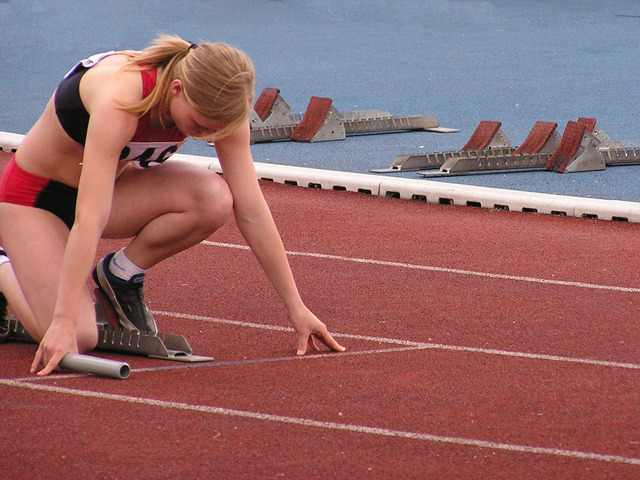The quality of your practice is directly proportionate to the quality of your thinking. Contrary to what many musicians believe, you’re not “training muscles” as you practice, so much as you are directing your thinking so that your brain can readily coordinate the muscular activity necessary to play well.
Mindless, repetitive practice usually yields limited, often disappointing results. Deep practice, where you are cognizant of your specific, in-the-moment goals, as well as what you hear, and sense in yourself as you play, is what leads to consistent improvement.
If you practice when you are distracted (maybe you didn’t get enough sleep, are in an angry mood, worried, about something, really hungry, etc.), you know that you won’t do very well. In fact, you might even finish your practice session with the feeling that you wasted your time.
But what about when you’re fully present and focused for your practice session? Are there ever times when you need to check your thinking? My answer is a resounding yes!
The more efficient I become in my practice routine, the more I realize how important it is to refresh my thinking frequently. This calls upon my willingness to stop what I’m doing. To take the saxophone out of my mouth and regroup, so to speak. Not always an easy thing to to when I’m in practice mode. If I play a particular passage less than ideally, I want to jump right back in and get it “right”, without any thought about what I need to do to “get it right”.
But I’ve learned that stopping to check in with, and redirect my thinking is always a better choice than plunging forward again with another mindless, misdirected effort. It always makes the next attempt so much more efficient and constructive. So I’ve gotten pretty good at stopping.
After I’ve stopped, I usually refresh my thinking by asking myself a few simple questions:
- Am I tightening my neck, shoulders and back?
- Am I allowing the weight of my body to balance through my feet (when I stand as I practice)?
- Am I mostly expanding or contracting (releasing or tensing)?
- How is my breathing (effortless and quiet, or tense and noisy)?
- Am I really listening to what I’m playing (as opposed to just hearing sounds)?
- Am I clear about what my immediate goal is with this particular exercise, passage, etc?
I pause to ask myself these questions dozens and dozens of time as I practice. Then I return to my full stature (my full length and width), finding all the space in my body again, and recharging my senses. I return to the physical and mental conditions that I need to play my best.
I’ve gotten so good at it that I can make these assessments rather quickly, then get right back to playing my instrument. For me it’s almost like I’m pushing a “reset” button for my brain, or refreshing the screen of my computer. Everything seems to flow and fall back into place when I do this.
If you wanted to simplify it all, you could ask yourself, “Am I tending more toward contraction or expansion as I play?” Included in this question (besides noticing your body) is your ability to listen to and hear yourself. Are your senses going inward (contracting), excluding the full experience of your sound, or expanding outward into the room where your sound actually is?
If you ever feel yourself becoming frustrated and/or fatigued as you dig deep into your practice, consider this idea of stopping and refreshing your thinking. Taking time to pause and redirect your thoughts is never a waste of time when you practice. Never. You’ll find (as I and my students have) that by stopping briefly to refresh, you’ll return to the task of practice with greater focus and clarity. You’ll make fewer mistakes (which means you’ll spend less time making unsuccessful “takes” of whatever you’re working on). In short, you’ll get more done in less time. Really.
Plus, you’ll develop a good standard for awareness that you’ll bring into your performances. All good news.
And if you’d like to stop and take a slightly longer moment to refresh your thinking, you might want to think to yourself the Alexander Technique directions:
I allow my neck to be free, so that my head releases upwards on top of my spine, (I don’t tense my neck and jaw, jamming my head downwards into my torso)
so that entire torso can lengthen and widen, (I don’t tense my shoulders, back and ribcage)
so that my knees can release forward and away, (I don’t tighten my pelvis to draw my legs up tightly into my hip joints; I don’t lock my knees.)
so that my heels can release into the ground. (I don’t tense my feet and ankles, so that I allow the weight of my body to go through my feet)
These directions are a good description of what happens as you release tension and expand back to your full stature. If you practice using them consistently, you’ll get consistently good results (both I and my students have).
But whether you use these directions, or ask yourself the kinds of questions that I’ve listed above, or simply remind yourself to pause for a moment to regain your stature and your clarity, make a point of stopping to refresh your thinking.
Make it an aim as you practice, and acknowledge and reward yourself with encouragement when you’ve succeeded in doing so. Ask yourself, “How many times was I able to stop and redirect my efforts in the 15 minutes I’ve spent working on this particular exercise?” Notice that when you do this, you play with much less tension, and greater clarity and consistency. Make this a part of your practice habits, and you’ll be pleased with the results.

